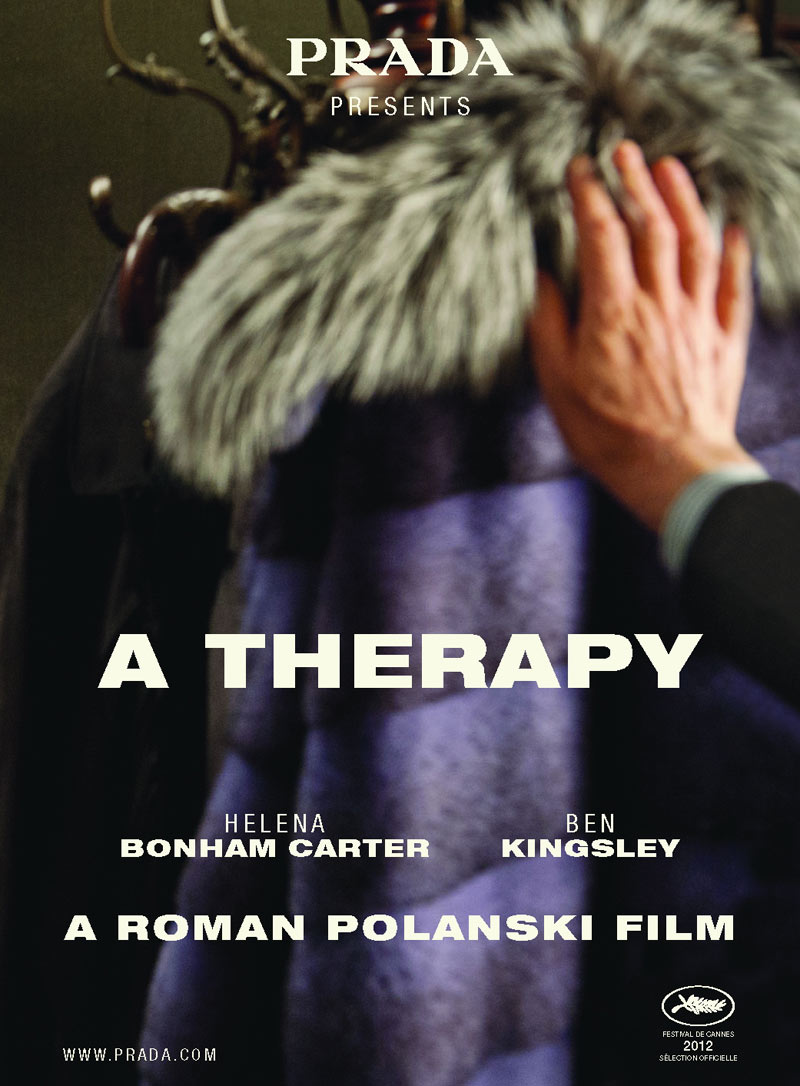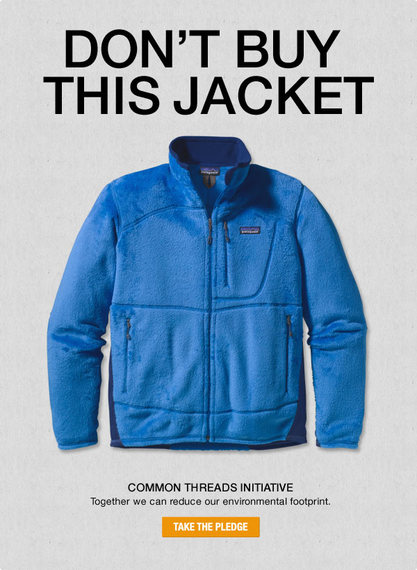Fashion Brand Storytelling: Create an Emotional Connection with Your Audience
How can brand storytelling influence your marketing messages? Learn how to create a compelling narrative for 2023 to leverage your fashion brand.
What is fashion storytelling for brands?
Fashion brand storytelling is a marketing strategy that involves telling a brand story or conveying a message to connect with customers on a deeper level and engage them in a meaningful dialogue. It must evoke emotions while communicating the brand’s identity, values, mission, and unique selling point.
Brand storytelling can acquire many forms, like editorial photoshoots, advertising campaigns, or runway shows and the brand stories can explore a wide range of themes like history, identity, or social issues.
Roots of Storytelling
Fashion brand storytelling is a relatively new concept but has gradually become a vital part of the fashion industry. The first form of fashion storytelling was through fashion photography, which emerged in the early 20th century and created iconic images that captured the spirit of that time.

Fashion shows have always been an important format for storytelling, with designers using music, lighting, and choreography to create a particular scenario that could tell a story through their fashion collections.

In the mid-20th century, advertising (with advertisements for luxury brands such as Chanel and Dior) and fashion shows become the most important storytelling platforms in fashion.

Only at the beginning of the 21st century, short fashion films have become a popular way to tell stories great brand stories. These films usually feature models and celebrities and are designed to showcase the brand’s aesthetic and values.

Nowadays, social media platforms like Instagram and Facebook have transformed the way fashion is consumed and shared as it has allowed brands to tell stories about their products, values, and behind-the-scenes processes while connecting with their customers on a more personal level.

To conclude, even though storytelling and its channels’ importance have changed over time, its purpose of creating an emotional connection between consumers and brands has remained the same.
Real cases: Storytelling by big fashion labels
Successful fashion brands use storytelling to create powerful brand narratives and build lasting relationships with their customers. By developing these compelling stories brands were able to better connect with customers on a more emotional level.
There are some successful brand storytelling examples like Burberry, Chanel, and Levi’s.
Burberry’s iconic trench coat, which was first worn by soldiers in World War I, is now a symbol of timeless style. The label uses this story to create a powerful brand narrative based on timeless elegance that is reinforced by its advertising campaigns and runway shows.

Gabrielle “Coco” Chanel’s legacy is what guides the Chanel fashion brand. The elegance, sophistication, and innovation based on the label foundation are nowadays it’s the guideline in all their storytelling efforts.

Levi’s jeans were first worn by gold rush miners in California. Since then, they have transformed into a symbol of the American style. Levi’s authenticity and product durability storytelling is a great example of how to use heritage in creative storytelling.

Why do brands need to tell a compelling brand story?
Telling a compelling story is important in today’s crowded fashion industry as it is a powerful way labels use to differentiate themselves from competitors and build brand loyalty. A compelling brand story can also help brands to establish themselves as more than just a provider of a product or service.
Some of the reasons that make brands feel the need to create stories that resonate with their customers are:
-
Emotional connection
Brand storytelling has the power to create an emotional connection with customers, which is fundamental to increasing brand loyalty. When customers’ values are linked to a brand’s story and customers feel a personal connection, they may become loyal over time and recommend the brand to others.

-
INCREASED Engagement
Great stories in branding can better engage consumers and encourage them to share the message with others, building brand awareness. A good story that resonates with the target customer can make an impression that will stay forever in its mind.
-
Authenticity
Brand storytelling can help enlighten why a business exists in a way that feels authentic and genuine.
-
Differentiation
In today’s competitive market, consumers have a wide range of options when it comes to choosing products or services. Good storytelling can help a brand differentiate itself from competitors by communicating its unique values and selling proposition and establishing itself as a leader in its industry.
-
Higher Value Perception
When a brand tells a compelling story it can increase the perceived value of its products as customers are usually willing to pay more for products that align with their beliefs.
Storytelling conveys the brand’s purpose
Storytelling is an efficient way to convey brand purpose as it allows it to communicate its values and mission in a way that resonates with prospective customers on an emotional level.
A brand’s purpose is the real reason a fashion brand exists, and what inspires and guides its actions. For example, Flavia Aranha is a fashion label committed to sustainability. By telling a story about how it sources its materials in an environmentally responsible way it will capture consumers who care about sustainability.

Excellent storytelling develops a curiosity in the brand personality
Excellent brand storytelling can develop curiosity in a brand personality by creating a sense of mystery around it. By exploring this curiosity, labels can encourage customers to learn more about their brand’s mission, which can lead to increased engagement and loyalty.
To develop curiosity a label must use techniques such as suspense, surprise, and intrigue. This can be done, for example, by only revealing the full details of the product at the end of a story or by giving a glimpse at the company’s values and history without revealing that much information.
Powerful storytelling builds authenticity and trust
When a brand communicates its values, beliefs, and purpose by expressing a genuine story it can establish a sense of authenticity and build trust with customers.
When you build emotional connections by telling brand stories that resonate with your audience you can create an emotional level connection that goes beyond the functional benefits of a product or service.
And, because compelling stories sell, this consistent and transparent communication can build a stronger relationship based on trust and credibility which will ultimately drive sales.

How to develop valuable brand storytelling?
Developing a valuable brand story is the main goal of any fashion house that wants to stay relevant. To effectively develop a brand narrative, there are many key steps involved such as:
-
Understanding of your brand’s purpose and values;
-
Identifying your audience’s interests and preferences (like their favorite movies or places) will help tailor a story that resonates with them;
-
Defining a narrative with a clear beginning, middle, and end;
-
Use visuals such as photos, videos, and illustrations to bring stories to life;
-
Be authentic to your values and brand’s history. Don’t copy any other brand concept and avoid being too promotional;
-
Use simple, understandable, and memorable language to develop a clear and consistent brand message;
-
Be consistent across all channels to reinforce your storytelling.
In the next part of this article, we will explore all of the steps involved in brand storytelling for a deeper understanding of how to use them to make a fashion brand successful.
Identify your brand’s unique story
A brand’s unique story is the narrative of how it was created, what the brand stands for, and what makes it different from competitors. Identifying a brand’s origin story is vital to the success of brand storytelling.
To properly identify a brand story, one must be guided by the following steps:
-
Why does your brand exist? You must understand the motives for its creation, and the overall company’s history (including how it was founded and its evolution).
-
Clearly define your brand’s purpose and mission;
-
Analyze your competitors to see what makes your brand stand out. This can help you identify unique aspects of your brand to focus on;
-
Understand your brand personality to conceive a story that reflects it;
-
Find the human element that makes people connect with stories. This can be achieved by incorporating real experiences or emotions into your storytelling.
Align Your Brand Narrative to Your Brand’s Values
Brand values are the fundamental principles and core values that guide a company’s vision, behavior, and decision-making. They represent the purpose and main character of the brand and are usually reflected in the brand’s mission statement.
Some examples of common values entail quality, innovation, sustainability, inclusivity, transparency, and integrity.
When a brand frequently demonstrates its values through its narrative, it can originate meaningful connections with customers.
There are narrative techniques brands should follow to align their narrative and values, such as:
-
Identifying the core values and creating a story based on them to make certain every aspect of the story reflects the brand’s principles;
-
Choosing the right language and tone depending on the aims of the project;
-
Consistently reinforce the narrative in all aspects of communication.
This way you can create a genuine and cohesive brand story that reinforces your brand identity.
Write a story, not a list of facts
Writing a great story is different from simply pointing out a list of facts about your brand and products. Take into consideration that a list of facts is uninteresting and makes it difficult for the audience to emotionally connect with a brand. In opposition, a good story can engage the audience and create memorable experiences, this way building brand loyalty.
That is why telling stories instead of simple facts is absolutely essential to communicate and form a consistent brand image. When you start envisioning and writing there are narrative techniques you may want to follow such as:
-
Always start by focusing on your values and identifying your audience;
-
Developing a main character that will represent your values and embody the qualities that you want to transmit;
-
Inventing a plot and incorporating storytelling elements such as setting, conflict, and resolution to make the story more appealing. You can explore a hero’s journey or focus on regular people’s lives.
-
Incorporating your brand messaging into the story to reinforce your singular values.
-
Finally, edit the story for clarity and consistency and use it not only in advertising or social media but also incorporated in some visual elements like photography aesthetics.
Connecting with Customers Through Brand Stories
To have an audience’s attention you first need to pay attention to the audience, meaning knowing who that target audience is and what will matter to them. Brand storytellers have long ago understood this and that is why they tailor storytelling to the interests of a target customer.
While looking like a simple thing to do, connecting with a target audience via brand storytelling is a complicated process. Nonetheless, there are strategies to help tailor a brand story to a specific target audience such as:
-
Make it relatable by involving characters, situations, and emotions that your audience can relate to.
-
Use your brand story to show the human side of your business, like displaying how your brand is making a difference in people’s lives.
-
Use emotions and feelings such as joy or empathy to connect with your target market on a deeper level.
-
Make your brand story interactive by asking for feedback or creating a user-generated content campaign.
Humans are hardwired to stories
Humans are hardwired to stories because storytelling is an essential part of our evolutionary and cultural history.
Stories engage our brains and emotional connections in powerful ways. Humans naturally engage with stories on an emotional level because they:
-
Are easier to remember than facts or data;
-
Create meaning, make sense of the world, and help understand complex ideas;
-
Create a strong and impactful emotional journey;
-
Allow connecting with others by sharing common experiences and beliefs.
-
Provide context for information, making it easier to remember.
-
Inspire action by appealing to emotions and personal values.
Brand storytelling examples that connect with audiences
Some brands have understood the power of brand storytelling to create an emotional response from customers and have used it to their advantage. An excellent example is Nike’s iconic “Just Do It” slogan and campaign emphasizing the idea of pushing beyond one’s limits and overcoming obstacles to achieve greatness.
Some other examples include Dove’s “Real Beauty” Campaign which brings messages of inclusivity and body positivity, Patagonia’s “Worn Wear” Campaign which emphasize its commitment to sustainability and environmentalism, and Only Human “Stay” campaign, which focused on mental health awareness.
Brand storytelling elements and channels
Brand storytelling recurs to different elements and formats to convey the message it wants to transmit.
Some of the key elements include characters (that may be people, animals, or inanimate objects), internal or external plot conflicts, setting (time and place in which the story takes place), theme, and emotion.
Use multiple channels to spread your story
A channel refers to the different platforms that a brand uses to communicate and distribute a product or service.
When multiple marketing channels are used to spread a brand’s identity, it can create a more comprehensive and memorable narrative. Some channels you can use to spread a label story incorporate:
-
Website to share your brand values and showcase your products.
-
Social media posts (on platforms like Facebook, Twitter, and Instagram) to share short brand stories with the help of visuals.
-
Blog Posts (about personal stories or behind-the-scenes content) to explore complex topics and issues in greater depth.
-
Video (traditional commercials, short films, or documentaries) to create immersive and emotional experiences.
-
Podcasts (including customer interviews) or experts to explore topics and issues more conversationally.
-
Events (like product launches, pop-up shops, or customer appreciation events) to share stories and connect with your audience in person.
Telling a Brand Story in a Digital World
Technology is more important than ever, and so is telling a brand story in a digital world.
Telling a brand story in a digital world is important because it allows brands to reach a wider audience and customers already expect labels to have an online presence.
The strategic approach to connecting with online customers can only happen if you create authentic, consistent, and compelling content. To do that, a brand must:
-
Utilize social media tools to its advantage;
-
Partner with influencers who align with your brand values;
-
Personalize the experience by using data and analytics to create targeted messaging personalized experiences (like personalized emails or product recommendations based on past purchases);
-
Use visual storytelling (like high-quality photos and videos) and consider using visual platforms like Instagram and Pinterest to share your brand story.
How to use brand storytelling in marketing strategy?
Brand storytelling in content marketing strategy is the use of a narrative to communicate a fashion brand’s values. To use brand storytelling in an effective marketing strategy, the marketing team must align the marketing messages to incorporate into advertising.
This way, it must create marketing campaigns that utilize all concepts already explored during the article, starting by introducing the brand narrative and personality in its content marketing and then creating authentic visuals and messages spread across different channels that will highlight the brand’s story.
Create experiences that align with your brand storytelling
Creating experiences that align with your brand storytelling is important to building recognition and brand identity. To create this alignment, one must consider the following steps:
-
Develop a brand experience strategy that aligns with your message;
-
Create consistent marketing experiences by using uniform messaging and visual identity;
-
Determine the desired emotional response you want to evoke.
-
Consider how you can use storytelling to explain a product or service benefit while also connecting with an audience;
-
Monitor and adjust as needed by gathering feedback from customers or analyzing metrics such as engagement and conversion rates.
Measure and adjust your storytelling efforts
It is always important to measure and adjust brand storytelling efforts to double-check if the brand narrative is still resonating with the target audience and obtaining the desired objectives.
For this purpose, a brand needs to start by defining its goals, whether it is increasing brand awareness or driving sales. Only after the objective is defined any company can:
-
Choose the best metrics to measure its storytelling efforts (which can be website traffic, social media engagement, or customer feedback);
-
Collect and analyze data to understand if everything is performing well;
-
Adjust the storytelling strategy when needed, which can mean changing the content format, or targeting a different public;
-
Test and iterate to secure the desired results.

Start using storytelling to your advantage
Join Epiprodux if you want to create content and express a powerful story that will engage with customers on a deeper level.
Epiprodux strategies will help you develop your brand storytelling so that your brand can achieve more success.


